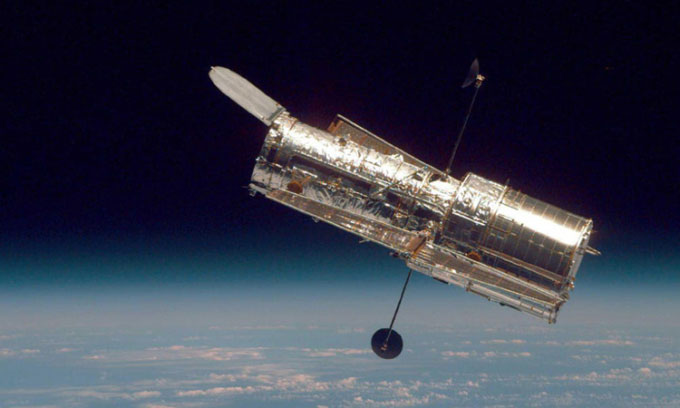Proposal to build a space telescope $ 11 billion
Astronomers propose to build a new telescope to replace Hubble with the ability to observe distant and super faint exoplanets.
The National Academy of Sciences, Engineering, and Medicine (NASEM) released the Decade Survey of Astronomy and Astrophysics 2020, also known as Astro 2020 . This report is released every 10 years and presents plans for the next decade in the field of astronomy in the United States.

The Hubble Space Telescope operated in orbit in 1997. (Image: NASA).
Astro2020 gives priority to three main issues: finding exoplanets capable of harboring life, understanding the mysteries of the universe including dark matter and the expanding universe, and understanding the formation of galaxies. The report also recognizes the importance of increasing diversity, expanding reach in astronomy, and supporting those just starting out.
One of the most notable proposals is to build a new space telescope called the Great Observatory to replace Hubble, an aging space telescope that suffered a series of problems this year. The new telescope will work at optical, infrared and ultraviolet wavelengths and could be used for tasks such as observing distant exoplanets to see if they are suitable for life.
The Great Observatory will be a combination of two projects, the Habitable Exoplanet Observatory (HabEx) and NASA's Large Ultraviolet Optical Infrared Surveyor (LUVOIR) . At a cost of $11 billion, the Great Observatory will see distant planets 10 billion times fainter than their host stars.
"The new report sets out an ambitious yet inspiring and aspirational vision for the next decade of astronomy and astrophysics," said Fiona Harrison, head of physics, mathematics, and astrophysics at the university. California Institute of Technology, said.
"By changing the way we plan for the most ambitious space projects, we can develop a rich portfolio of missions to pursue distant goals, such as searching for life on other planets. orbiting stars in space near the Milky Way," added Harrison.
- China will build the second giant telescope to find aliens
- Hawaii is about to build the largest telescope in the Northern Hemisphere
- About to build the world's largest telescope
- China speeds up space
- Propose girlfriends at the edge of space
- Telescope 'travel' back in time 13.2 billion years
- NASA completed the telescope looking back past 13 billion years
- NASA is about to finish the machine looking past 13.5 billion years
- April 25, 1990: The Hubble Space Telescope goes live
- NASA builds the world's most powerful telescope
- Super telescope looks back 13.5 billion years of failed testing
- Russia will spend $ 1 billion to build a new space airport
 Norway built the world's tallest wooden tower
Norway built the world's tallest wooden tower Kremlin
Kremlin Ashurbanipal: The oldest royal library in the world
Ashurbanipal: The oldest royal library in the world Decoding the thousand-year construction of Qin Shihuang shocked the world
Decoding the thousand-year construction of Qin Shihuang shocked the world